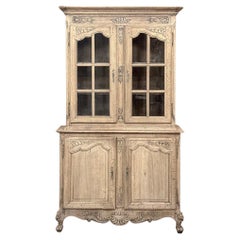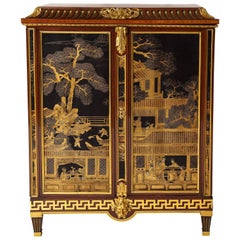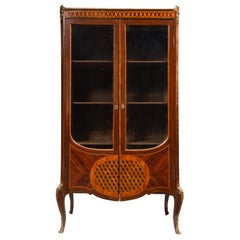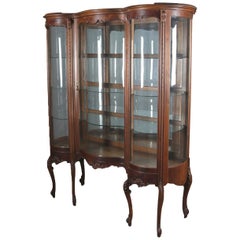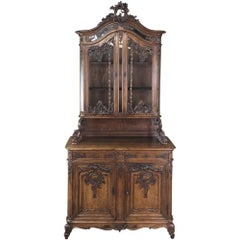Louis Xiv China Cabinet
Antique 1880s Louis XIV Bookcases
Brass
Antique Late 19th Century French Louis XIV Commodes and Chests of Drawers
Bronze
Antique 19th Century French Louis XIV Vitrines
Ormolu
Recent Sales
20th Century French Louis XIV Cabinets
Glass, Mirror, Mahogany
Antique 1890s Belgian Louis XIV Buffets
Glass, Oak
Late 20th Century Chinese Louis XIV Commodes and Chests of Drawers
Brass
People Also Browsed
2010s Italian Mid-Century Modern Table Lamps
Gold Leaf
21st Century and Contemporary American Sofas
Linen, Velvet
Mid-20th Century Danish Scandinavian Modern Vases
Ceramic, Clay, Pottery, Stoneware
Antique Early 19th Century Swedish Gustavian Cabinets
Glass, Wood, Paint
2010s American Organic Modern Vases
Ceramic, Cotton
2010s American Organic Modern Vases
Ceramic, Cotton
Mid-20th Century Italian Art Deco Vases
Murano Glass
Antique 18th Century French Chinoiserie Table Mirrors
Mirror, Wood
Antique Early 1900s Austrian Art Nouveau Vases
Blown Glass
Antique 1850s Chinese Qing Lacquer
Lacquer
Antique Late 19th Century French Renaissance Revival Buffets
Brass
2010s Danish Arts and Crafts Pillows and Throws
Fabric
Antique Mid-19th Century French Louis XV Vitrines
Brass
20th Century French Vases
Crystal
Vintage 1960s Japanese Mid-Century Modern Vases
Ceramic
Antique Mid-19th Century French Louis XVI Chairs
Giltwood
Louis Xiv China Cabinet For Sale on 1stDibs
How Much is a Louis Xiv China Cabinet?
A Close Look at Louis-xiv Furniture
As opposed to the styles that would follow from the other 18th-century French kings, Louis XV and Louis XVI, antique Louis XIV furniture is rigid and imposing. It expresses opulence — even its armchairs, with their upright backs, straight legs and lavish ornamentation, look like thrones. Authentic Louis XIV sofas, a then newly emerging iteration of seating, are fully upholstered and often feature decoratively carved frames of walnut, chestnut or oak.
When French King Louis XIV established his royal court at Versailles in 1682, he transformed what was once a hunting lodge into a palace that declared his wealth and power through its design. Until his death in 1715, he reigned with a spirit of excess and absolute political dominance. The “Sun King,” as he called himself, believed that France revolved around him as planets do the sun. Louis XIV adopted the sun as his emblem, decorating the grounds with symbols of the sun and Apollo, the Greek god of the sun. As he stated, “There is nothing that indicates more clearly the magnificence of great princes than their superb palaces and their precious furniture.” He was a child when he became king in 1643, only shaping his style after he became absolute monarch in 1661.
Reflecting trends in French Baroque art, Louis XIV furniture characteristics included exuberant decoration. There were gilded bronze details including shells, suns, grotesques, lions and classical references like acanthus leaves. The years of growth in the country’s manufacturing, such as the tapestries and cabinets made at Gobelins, led to design innovations. The commode replaced the chest as a storage device, with drawers and a surface that could double as a desk.
The materials were luxurious, such as the popular tortoiseshell veneer technique that leading cabinetmaker Pierre Golle used in his designs. André-Charles Boulle, who became royal cabinetmaker in 1672, was a masterful artist of marquetry, using inlays of ebony, exotic woods and mother-of-pearl.
Find a collection of antique Louis XIV bedroom furniture, chairs, tables and other pieces on 1stDibs.
Finding the Right Storage-case-pieces for You
Of all the vintage storage cabinets and antique case pieces that have become popular in modern interiors over the years, dressers, credenzas and cabinets have long been home staples, perfect for routine storage or protection of personal items.
In the mid-19th century, cabinetmakers would mimic styles originating in the Louis XIV, Louis XV and Louis XVI eras for their dressers, bookshelves and other structures, and, later, simpler, streamlined wood designs allowed these “case pieces” or “case goods” — any furnishing that is unupholstered and has some semblance of a storage component — to blend into the background of any interior.
Mid-century modern furniture enthusiasts will cite the tall modular wall units crafted in teak and other sought-after woods of the era by the likes of George Nelson, Poul Cadovius and Finn Juhl. For these highly customizable furnishings, designers of the day delivered an alternative to big, heavy bookcases by considering the use of space — and, in particular, walls — in new and innovative ways. Mid-century modern credenzas, which, long and low, evolved from tables that were built as early as the 14th century in Italy, typically have no legs or very short legs and have grown in popularity as an alluring storage option over time.
Although the name immediately invokes images of clothing, dressers were initially created in Europe for a much different purpose. This furnishing was initially a flat-surfaced, low-profile side table equipped with a few drawers — a common fixture used to dress and prepare meats in English kitchens throughout the Tudor period. The drawers served as perfect utensil storage. It wasn’t until the design made its way to North America that it became enlarged and equipped with enough space to hold clothing and cosmetics. The very history of case pieces is a testament to their versatility and well-earned place in any room.
In the spirit of positioning your case goods center stage, decluttering can now be design-minded.
A contemporary case piece with open shelving and painted wood details can prove functional as a storage unit as easily as it can a room divider. Alternatively, apothecary cabinets are charming case goods similar in size to early dressers or commodes but with uniquely sized shelving and (often numerous) drawers.
Whether you’re seeking a playful sideboard that features colored glass and metal details, an antique Italian hand-carved storage cabinet or a glass-door vitrine to store and show off your collectibles, there are options for you on 1stDibs.
